- Quick Read
- Deep Read ( 6 Min. )

Why is Christian Science in our name?
Our name is about honesty. The Monitor is owned by The Christian Science Church, and we’ve always been transparent about that.
The Church publishes the Monitor because it sees good journalism as vital to progress in the world. Since 1908, we’ve aimed “to injure no man, but to bless all mankind,” as our founder, Mary Baker Eddy, put it.
Here, you’ll find award-winning journalism not driven by commercial influences – a news organization that takes seriously its mission to uplift the world by seeking solutions and finding reasons for credible hope.
Explore values journalism About usMonitor Daily Podcast
- Follow us:
- Apple Podcasts
- Spotify
- RSS Feed
- Download
TODAY’S INTRO
Don’t expect the Spokane Indians to change their name
 Mark Sappenfield
Mark Sappenfield
The new owners of the Spokane Indians minor league baseball club came to the Spokane Tribe of Indians in 2006 with a question: Should we change our name?
Keep the name, the tribal council said, but change how you think about it.
This week, news broke that the Cleveland Indians baseball team will change a nickname seen as demeaning by many Native Americans. Spokane shows a different path. Today, Spokane’s baseball team is still the Indians, but there are stadium placards explaining tribal history and culture, signage in the local language of Salish, a team logo inspired by a Native artist, as well as a jersey written in the Salish script – so pioneering that a copy is in the Baseball Hall of Fame.
Other teams, such as the Florida State University Seminoles, have taken a similar path – genuinely honoring a tribe, not caricaturing it. In Spokane, a shift in thought changed everything. “You have a choice. You can do it with arrogance and appropriation, or you can do it with humility and collaboration,” designer Jason Klein told Sports Logos News.
The Spokane Tribal Council has called the work a “groundbreaking” example of respect and collaboration. “To see the jerseys in my language means a lot to me personally,” tribal chairman Carol Evans told Indian Country Today in 2015. “It’s important for the people that live in the city of Spokane to know who the original people are.”
Share this article
Link copied.

Help fund Monitor journalism for $11/ month
Already a subscriber? Login

Monitor journalism changes lives because we open that too-small box that most people think they live in. We believe news can and should expand a sense of identity and possibility beyond narrow conventional expectations.
Our work isn't possible without your support.
‘Am I going to be evicted?’ Answer now may hinge on Congress.
The pandemic has put “historic” pressure on renters in the United States. Here we offer a portrait of why it’s so important – to the economy, to health, and to people’s livelihood – to find a solution.
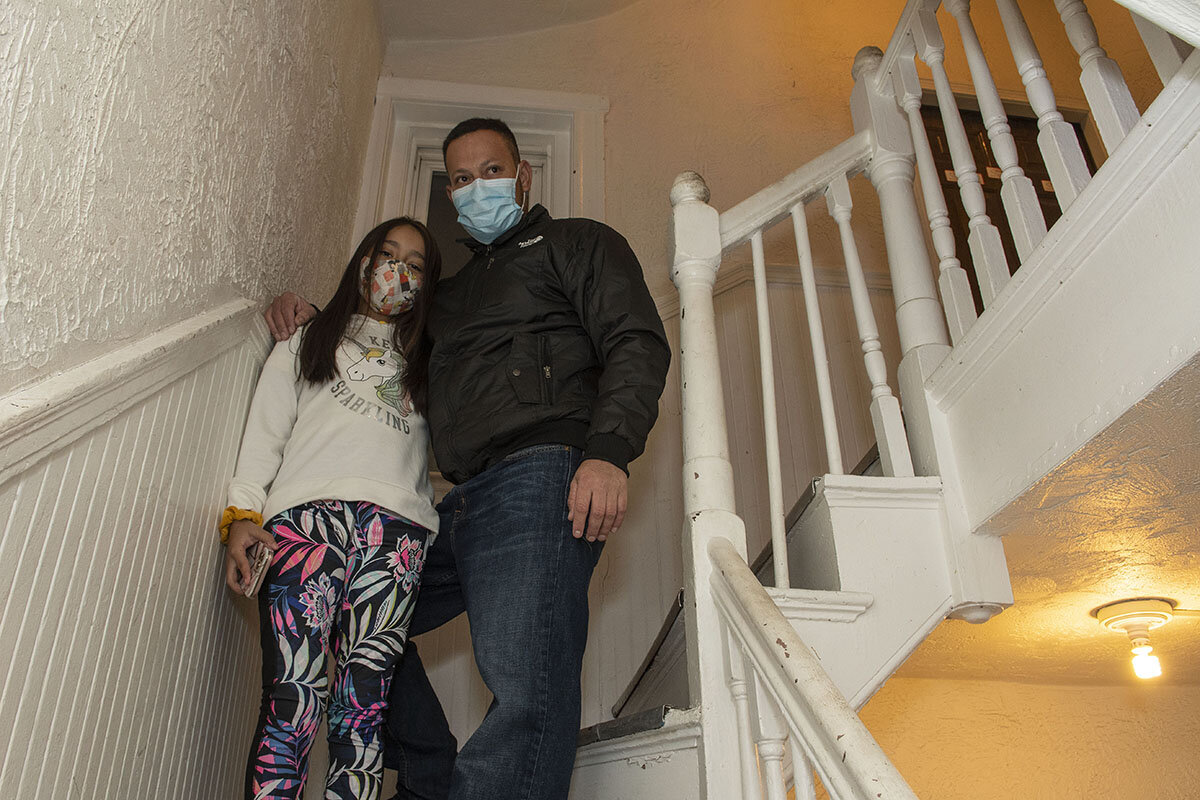
-
Nick Roll Staff writer
Millions of renters in the U.S. face a bitter prospect this winter: eviction. Already, the numbers of low-income renters, often people of color, forced from their homes is ticking up. The end of a federal moratorium on evictions, combined with the expiration of pandemic unemployment assistance, could turn that trickle into a flood – by one estimate affecting 40 million Americans.
And they would be pushed out at the height of a pandemic, which poses new risks. While medical professionals are urging people to socially distance, people evicted would be doubling up with relatives or friends or trying to find shelters that are already facing pandemic mandates to reduce crowding.
As of Tuesday, Congress appears close to a compromise measure that could provide rental assistance and extra unemployment benefits into 2021. But for now, Jucosta Wilson of Walton, Kentucky, is worried. After three months unemployed, she got rehired as a medical assistant. But that gap in income, plus her husband’s loss of employment, caused the couple to miss some rent payments and their landlord wants them out.
“We’re being pushed into a situation that’s beyond our control,” says Ms. Wilson. The couple has a court date set for four days before Christmas.
‘Am I going to be evicted?’ Answer now may hinge on Congress.
Jucosta Wilson of Walton, Kentucky, considers herself fortunate. Laid off in March, when pandemic-driven lockdowns caused unemployment to surge dramatically, she got rehired as a medical assistant at a dermatologist’s office three months later. But that gap in income, plus her husband’s loss of employment, caused the couple to miss some rent payments and their landlord wants them out.
“We’re being pushed into a situation that’s beyond our control. It’s not only hard to get out of that situation, but it’s even harder to survive in that situation,” says Ms. Wilson. The couple has a court date set for four days before Christmas.
In a gritty part of East Boston it’s only 5 p.m. and already dark, and raining. Nearly a dozen people brave the cold for a weekend rally at 168 Gove St., where the owner wants to evict his tenants – not because of nonpayment of rent but because he wants to develop condos.
The group, organized by a social justice organization, chants slogans and listens to short speeches in Spanish and English next to a big banner that reads: “Eviction Free Zone.”
Despite a nationwide moratorium ordered by the Centers for Disease Control and Prevention and a few remaining state and local restrictions, evictions are ticking up across the United States. If Congress does not approve emergency rental and other assistance before the end of the year, today’s trickle of displaced tenants will become a flood that would be unprecedented for its size and speed. It is particularly worrisome during the pandemic, where evidence is mounting that the housing exodus is spreading the virus.
Families are doubling up at times when medical professionals want them to socially distance. Shelters, overwhelmed even in normal times, are already pushing out some of their existing clients because state and local mandates are forcing them to reduce capacity.
“The eviction crisis we are facing right now is historic,” says Diane Yentel, head of the National Low Income Housing Coalition, a social-policy organization in Washington. “If government doesn’t intervene, we’re looking at the very real possibility of tens of millions of people losing their homes this winter during this height of the coronavirus spread.”
Evictions actually spread the virus, according to a study released two weeks ago and not yet peer-reviewed. Researchers at UCLA and several other major universities found that states that lifted their moratoriums on evictions during the summer had 5.4 times more pandemic-related fatalities than states that kept their moratoriums in place for an extra 16 weeks.
“That amounted to 10,700 deaths due to eviction and COVID-19 that were entirely preventable,” says Emily Benfer, co-creator of the Eviction Lab at Princeton University and a law professor at Wake Forest University in Winston-Salem, North Carolina. For Congress “to turn their back on the health and well-being of adults and children across the country is unconscionable, especially at a time when their lives literally depend upon staying housed.”
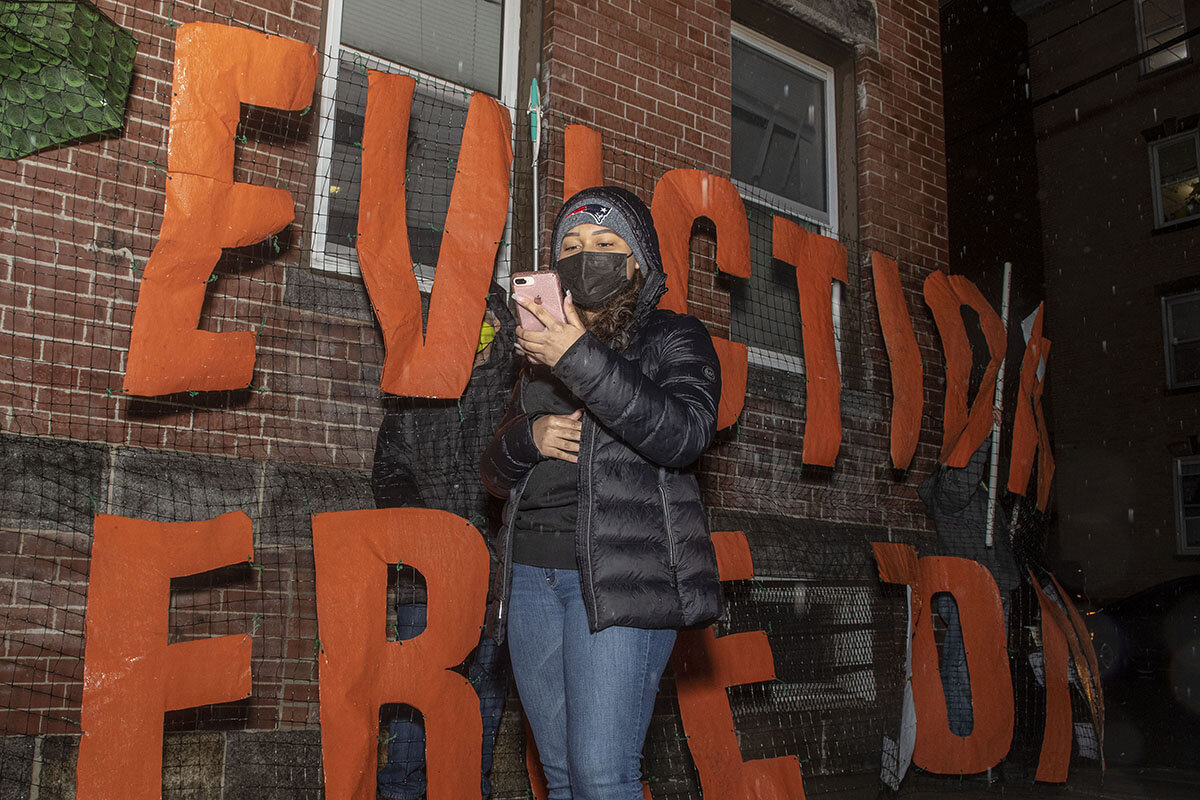
No one knows how many evictions have taken place so far. The Eviction Lab, which tracks the forced removal of tenants in 27 U.S. cities, says landlords have filed 155,000 evictions since the pandemic. If the CDC moratorium is allowed to run out without some form of financial aid quickly, some 30 million to 40 million Americans could lose housing in a matter of weeks or months, according to an Aspen Institute study.
A key reason: The pandemic has meant reduced income for legions of Americans whose employment is tied to in-person services – from food and entertainment to retail shops and personal-care salons. Very often those workers are renters.
An emergency boost in unemployment benefits, coupled with the temporary eviction bans, helped stave off a crisis for renters in 2020.
But Congress has struggled to come up with a follow-on relief package after the roughly $2 trillion CARES Act was passed in March. As of Tuesday, Republican and Democratic negotiators seemed closer to agreement on a stimulus package of about $900 billion that could include provisions to delay a flood of evictions, such as $25 billion in rental assistance plus $300 a week in extra unemployment benefits for 16 weeks, to help struggling tenants.
For many renters, the future looks uncertain.
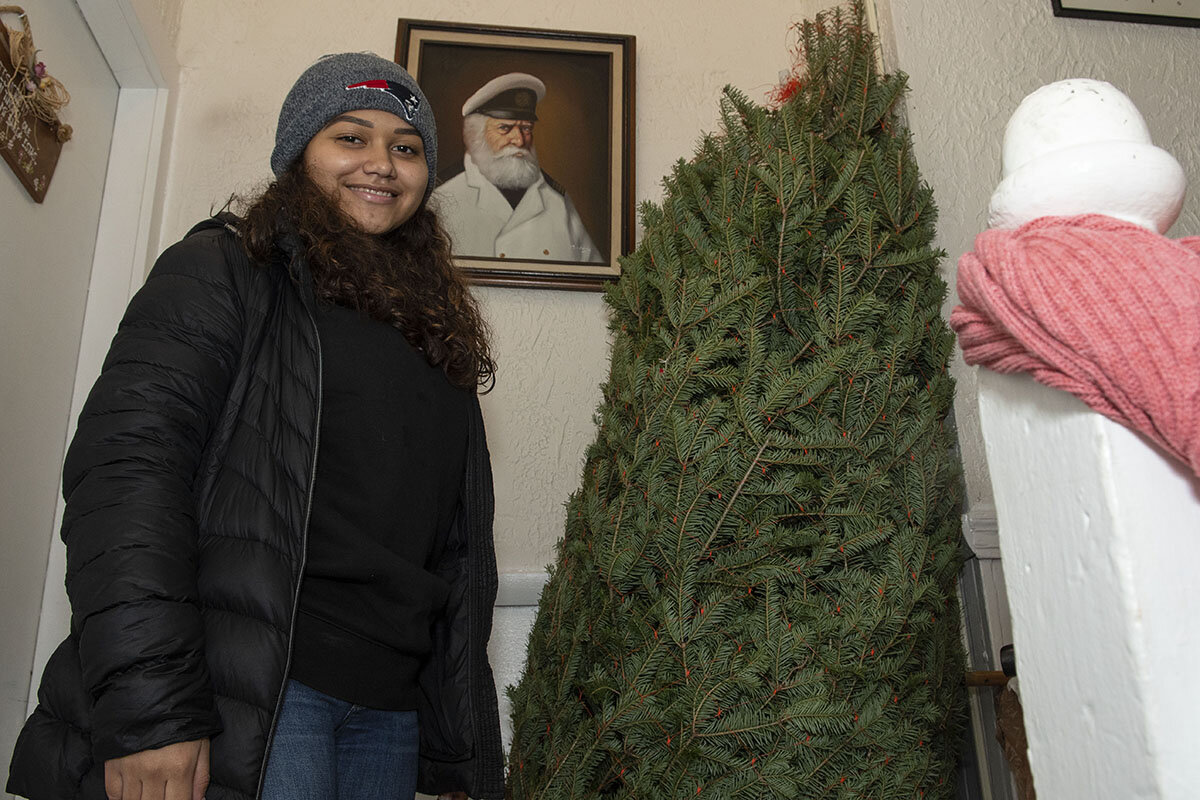
“I’m very scared about what’s going to happen. I mean, am I going to be evicted?” asks Shelby Brown, a single mother in Crittenden, Kentucky, who took a leave of absence in May to shepherd her children through the end of online school. Come summer, without any child care options, she quit her job as a pharmacy technician, which put her behind on rent, though a local anti-poverty nonprofit has since stepped in to help cover it.
“This has been our home for years now,” says Ms. Brown, who is still unemployed. “And I’m obviously trying to figure out what I’m going to do because I’ve applied for jobs but it doesn’t seem like anything that I’m doing is going to get me where I financially was.”
If current funding and protections expire, the number of evictions will go “completely through the roof” in January, says Kevin Finn, of Strategies to End Homelessness, a Cincinnati nonprofit. And due to social distancing precautions, homeless shelters are taking in fewer people. In Cincinnati and the surrounding county, the number of people sleeping outside has risen 35% between January and October, he adds. He attributes that to reduced shelter capacity, but also to family and friends being less available to host people who lose their housing, due to health concerns brought on by the pandemic.
The eviction crisis is also a landlord crisis. Stout Risius Ross, a global consulting firm, estimates that landlords will be owed somewhere between $13.2 billion and $24.4 billion in back rent by January. Much of the low-income housing in the United States is provided by mom and pop landlords who depend on rental payments for their own livelihoods.
“It is only a matter of time before both renters and housing providers reach the end of their resources,” said Doug Bibby, president of the National Multifamily Housing Council in a statement. The group, which represents landlords, found that three-quarters of renters had paid their December rent in the first week of the month, a nearly 8 percentage point decline from the same week a year ago.
Hardest hit are people of color. Last month, 30.6% of Black rental households and 17.5% of Hispanic households were behind in their rent, according to the Census Bureau. By contrast, 11.5% of white non-Hispanic rental households were in arrears.
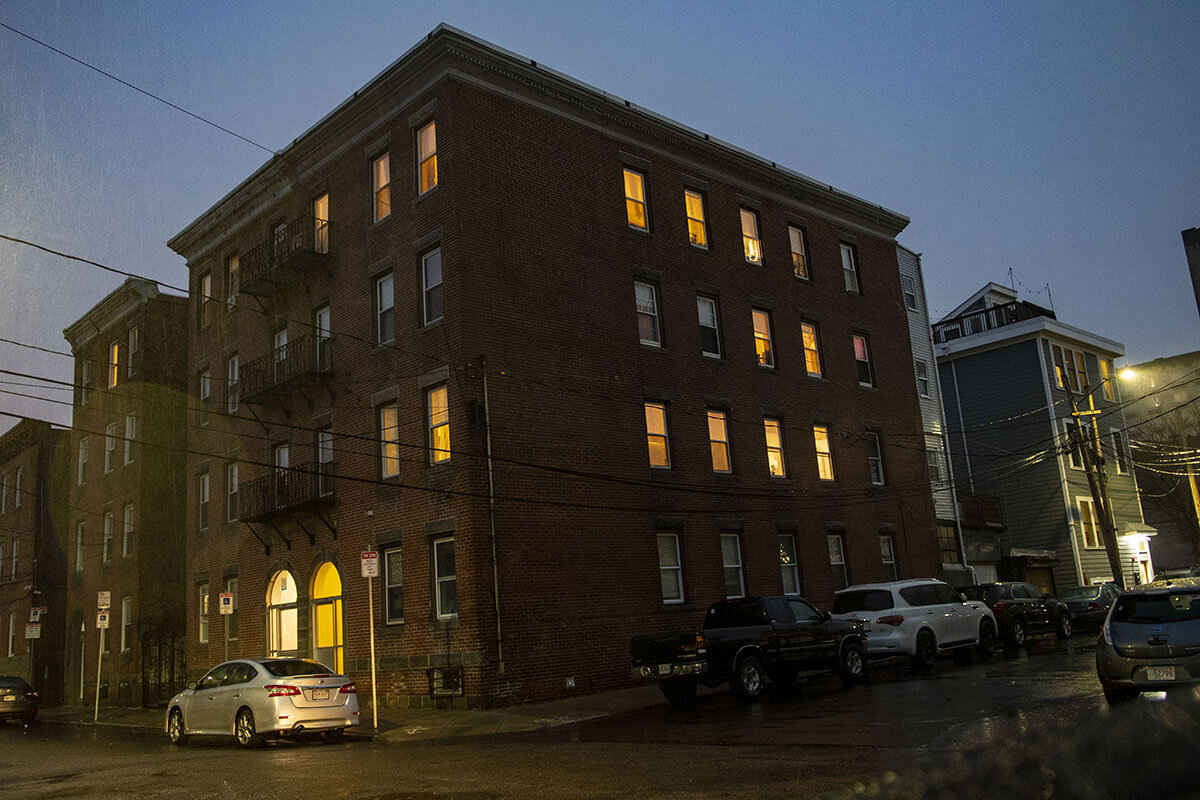
A new home “is very hard to find,” says Melvin Acevedo, a tenant of the East Boston apartment complex that the landlord wants to turn into condos. A professional window washer, who has seen his work dwindle as owners of empty office buildings cut back on expenses, he and his family have managed to stay current with rent through careful saving. But finding a new place in gentrifying Boston? “It’s very expensive,” he says.
“The state has never seen this before,” says Lisa Owens, executive director of City Life/Vida Urbana, the local social justice group fighting the East Boston evictions. The ongoing evictions linked to gentrification, coupled with the surge of pandemic-related evictions for nonpayment, will create a wave that could overwhelm local and state government, she says. “We are not equipped to deal with this.”
One way the CARES Act has improved things for at-risk renters is that it has opened up more money for nonprofits to reach people, and work with them and their landlords, before they get evicted or become homeless.
“So our normal model where … people have to already be homeless before [government] can assist them, is actually the least cost-effective way to combat the issue of homelessness,” Mr. Finn says.
In Kentucky, Ms. Brown has been preparing for the worst, filling out reams of paperwork to apply for a rental-assistance program and going to food pantries. “You’re always hoping that things are going to get better and things are going to be where they need to be to work out. And sometimes I feel like they do for me,” she says. “But, you know, you still have to prepare.”
Editor’s note: As a public service, we have removed our paywall for all pandemic-related stories.

Is race a factor in the slow pace of Israel's rescue of Ethiopian Jews?
Israel has not kept grand promises about rescuing Ethiopian Jews from a civil war. That has left many to wonder if race plays a role.
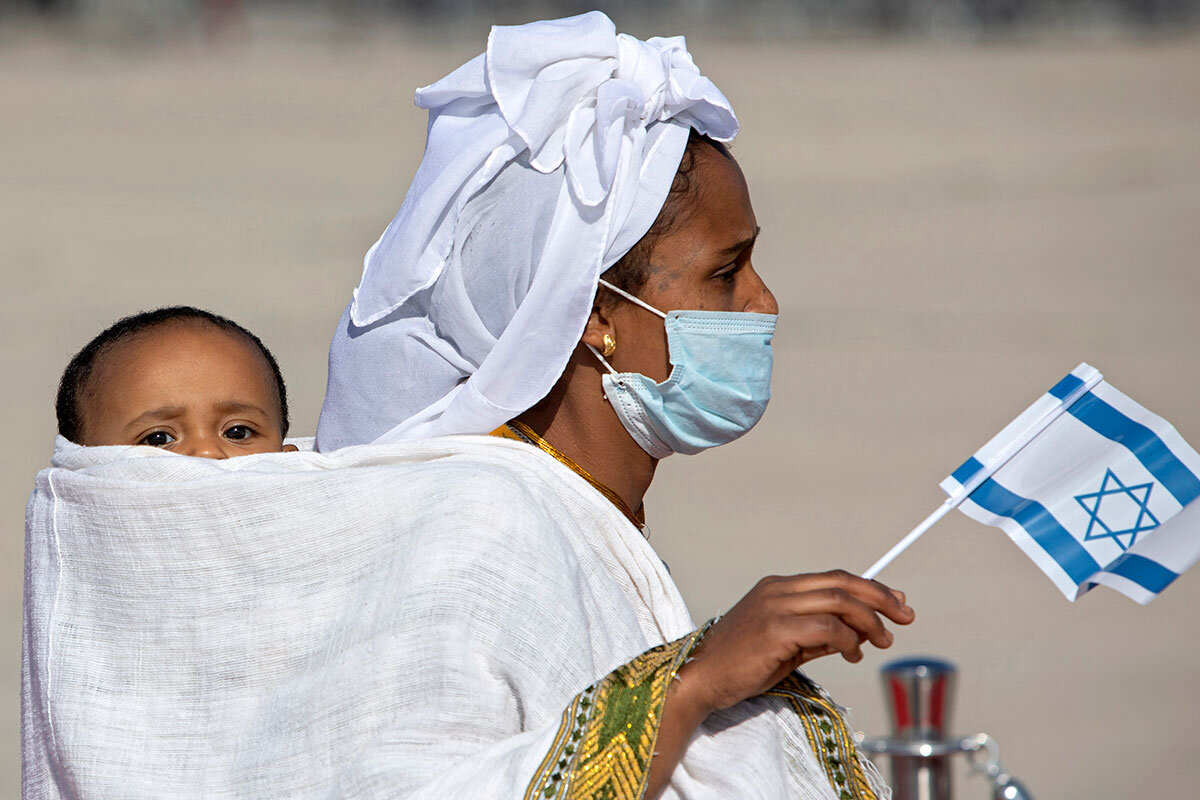
- Quick Read
- Deep Read ( 6 Min. )
In 2015, Israel pledged to bring thousands more impoverished Ethiopian Jews on aliyah – Hebrew for Jewish immigration to Israel. Since that decision, 2,250 Ethiopian Jews have been brought to Israel. And in October, the government decided to bring another 2,000 by the end of the year – a decision pushed by Absorption Minister Pnina Tamano-Shata, Israel’s first Ethiopian Cabinet member.
But Ethiopian activists lament the government’s comparatively slow pace. They accuse Prime Minister Benjamin Netanyahu, who promised to bring 7,500 immigrants to Israel before the country’s election last March, of using the issue to win the votes of the country’s 150,000 Ethiopian Jews. “Because this concerns Black Ethiopian Jews, the government doesn’t rush,” says Surafel Alamo, a spokesman for the Struggle for the Aliyah of Ethiopian Jewry.
Mr. Alamo himself immigrated to Israel from Ethiopia in 2006, but his two sisters remain in Gondar, an Ethiopian city buffeted by the country’s civil war and the pandemic.
“There is a humanitarian crisis,” says Alisa Bodner, an American Israeli activist for Ethiopian Jewish immigration. “No other Jewish community in the world is facing a crisis like this.”
Is race a factor in the slow pace of Israel's rescue of Ethiopian Jews?
When hundreds of flag-waving Ethiopian immigrants descended from a passenger jet to kiss the tarmac in Israel this month, they were feted by Prime Minister Benjamin Netanyahu in a ceremony reminiscent of the celebrated airlift of tens of thousands of Ethiopian Jews at the end of the last century.
But for Surafel Alamo, a university student who immigrated to Israel from Ethiopia in 2006, it was a bittersweet moment. That’s because Mr. Alamo’s two sisters remain in Gondar – an Ethiopian city buffeted by the country’s civil war and the pandemic – waiting for word from Israel about when they will be able to emigrate as well.
His sisters belong to a group of approximately 8,000 impoverished Jews in Gondar and Addis Ababa who are short of food and medicine as they wait for Israel to fulfill a 2015 decision to bring the entirety of the community on aliyah – Hebrew for Jewish immigration to Israel.
“The war is dangerous for them,” says Mr. Alamo, a spokesman for the Struggle for the Aliyah of Ethiopian Jewry, describing soldiers in the streets and rocket attacks from the rebellious province of Tigray. “They are scared for their life. It’s too bad that Israel isn’t taking care of them. The people there are suffering. They lack the basics.”
Since the 2015 pledge, 2,250 Ethiopian Jews have been brought to Israel. In October, the government decided to bring another 2,000 by the end of the year – a decision pushed by Absorption Minister Pnina Tamano-Shata, Israel’s first Ethiopian Cabinet member.
Ethiopian activists lament the government’s comparatively slow pace on immigration and charge that it reflects a pattern of discrimination toward African Jews that also manifests itself in policing in Israel and the immigrants’ economic struggles here. They accuse Mr. Netanyahu, who promised to bring 7,500 immigrants to Israel before the country’s election last March, of using the issue to win the votes of the country’s 150,000 Ethiopian Jews. A new election may be looming in early 2021.
“If they were really interested in aliyah, they would do it over a couple of months. But they do it little by little before elections,” says Mr. Alamo. “If [war] had taken place amid Jewish communities in the U.S., France, or the former Soviet Union, the government would declare an emergency aliyah. But because this concerns Black Ethiopian Jews, the government doesn’t rush.”
A week before the Dec. 3 arrival of the planeload of Ethiopian Jews, about 200 protesters demonstrated outside Mr. Netanyahu’s office in Jerusalem. With pictures of relatives in Ethiopia, they chanted “wake up” and held signs reading, “Don’t stop aliyah because of color.”
Mr. Netanyahu’s office didn’t respond to a request for comment, but an Israeli official who asked not to be identified says “budget constraints” have forced the government to implement the 2015 decision in phases.

While the largest group of Ethiopian Jews, the Beta Israel, traces its history back to the fourth century, the community’s Jewishness was questioned by some Israelis in the country’s early years before being affirmed by the country’s chief rabbis in the early 1970s.
Israel carried out dramatic airlifts of Ethiopians in two waves between 1984 and 1991, including flying some 14,300 immigrants in less than two days in May 1991, known as Operation Solomon. Yet while the country simultaneously celebrated and neglected the new arrivals, the government struggled to come up with an approach to tens of thousands of Ethiopian Christians with Jewish lineage – known pejoratively as Falash Mura – who left the Jewish community over the centuries but were seeking to return.
Successive commissions in the 1990s sought to develop a policy. Since then, Ethiopian Jews arrived here gradually. The government twice declared the immigration over, only to relent.
“Almost 30 years ago, Israel Radio declared very dramatically, ‘The Ethiopian exile is over.’ People thought that this is the end of the story. Soon after that, there are other people there in Addis Ababa with questions about their status,” says Steven Kaplan, a sociology professor at Hebrew University who focuses on the Ethiopian Jewish community.
“There are questions: Is this a Jewish migration issue or a humanitarian issue? … What’s clear is that each time the government accepts this idea that ‘There’s a relatively small number, we’re going to bring that number, and it’s going to be over.’ And each time, it turns out that there are” thousands more.
Similarly, Israel’s 2015 decision came some two years after it declared Ethiopian Jewish immigration completed.
The piecemeal nature of the immigration has split numerous families, with those in Israel sending financial support back to relatives, some of whom, having left rural villages in hopes of emigrating, have waited for years in shacks of mud and corrugated metal in migrant quarters of Gondar and Addis Ababa.
Mr. Alamo says he sends sums of 2,000 shekels ($600) whenever possible. Since the outbreak of the pandemic, his sisters, who are in their 30s, are no longer able to earn money selling coffee to pedestrians. Now the war has made telephone conversations more unpredictable.
“The people there are suffering. It’s we who are helping them,” he says. “If families here don’t send money, they have nothing to eat.”

Activists and community members allege the Jewish Agency, a quasi-governmental organization promoting immigration, and other Jewish organizations have not sufficiently focused on the plight of the community nor devoted enough resources.
“There is a humanitarian crisis,” says Alisa Bodner, an American Israeli activist for Ethiopian Jewish immigration. “No other Jewish community in the world is facing a crisis like this. Yet the majority of the Jewish world has turned its back on the community, including the state of Israel.”
Jewish Agency Director-General Amira Ahronoviz says the organization has been ramping up its humanitarian aid operation in Ethiopia over the last two years and considers it “very effective.” The effort currently includes 15 staff members, daily food aid to children, the distribution of hygiene products, and medical care.
Immigration from Ethiopia is an important part of the agency’s mission, she says. At the same time, the scope of that mission depends on Israeli policy. “We serve based on the government decisions, and eligibility [for immigration] is defined by” the Interior Ministry, Ms. Ahronoviz says.
Ms. Tamano-Shata, who toured a Jewish neighborhood in Ethiopia before the recent airlift, in August began promoting a $300 million plan to implement the 2015 decision, hoping to bring 4,500 immigrants by the end of the year.
Her appointment as absorption minister was a milestone just months after Ethiopians in Israel went to the streets by the tens of thousands in the summer of 2019 to protest police violence toward Black youths. In addition, during the election campaign of early 2020, Prime Minister Netanyahu lured an Ethiopian politician in a rival party to come to the Likud and appointed him deputy public security minister.
Despite that, police profiling hasn’t eased much, says Avi Yalou, an Ethiopian Israeli community activist. Mr. Yalou describes Mr. Netanyahu’s overtures to the Ethiopian community as “cheap populism.”
“Every time they say, ‘Now we’ll bring another 1,000.’ What is this, trading on a financial market?” he says. “There are grandparents that haven’t seen their grandkids. This is something that is unacceptable.”

Chinese students have cooled on US. Could Biden change that?
Chinese students have been a boon to American universities, but that’s changing, perhaps permanently. The question is what that will mean for colleges – and for America as a global talent magnet.
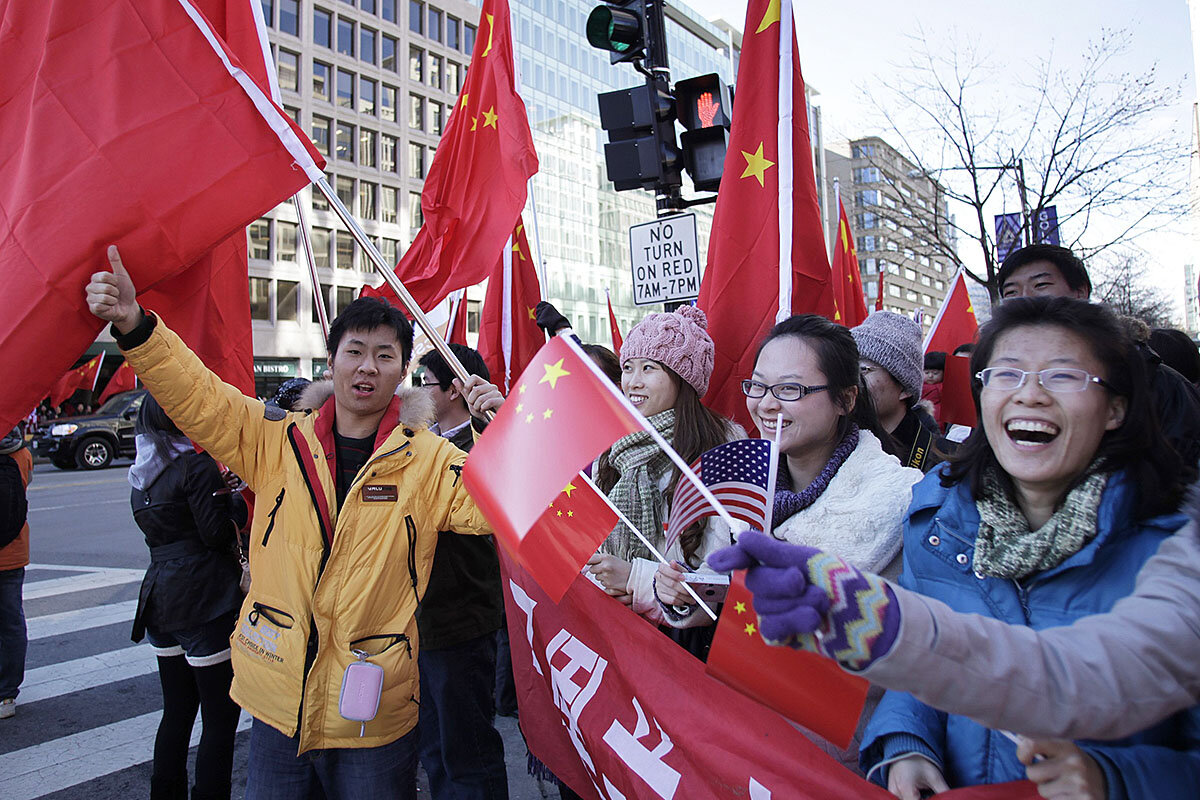
- Quick Read
- Deep Read ( 5 Min. )
-
Ann Scott Tyson Staff writer
Universities in the U.S. have come to rely on revenue from Chinese students, who contributed $14.9 billion to the economy in 2018 alone. But growth has leveled off, after years of double-digit increases – for reasons ranging from concerns about gun violence to Trump administration policies on China.
Now institutions are wondering if a Biden administration might do enough to reverse the trend of a thinning pipeline. The incoming president has signaled his appreciation for the talent and diversity international students bring, and announced plans to grant green cards to foreign graduates of U.S. doctoral programs.
But some education experts doubt a dramatic shift is coming, particularly with the pandemic influencing families’ decisions. And not all think that’s such a bad thing. The shift could prompt U.S. schools to reimagine how they operate, consultant Marguerite Dennis wrote in a column this fall.
Others are concerned about the potential for a permanent pullback in international students.
“The fundamental tragedy of this [current] administration’s choices is that some of it may be irreparable,” says Bob Murphy, of the Michigan Association of State Universities.
Chinese students have cooled on US. Could Biden change that?
As universities consider how to woo international students for the coming year, the views of one group in particular stand out: young people from China.
Despite tension between the two countries, Chinese students have traditionally numbered the most from any nation studying in the United States. Growth in their ranks has leveled off after years of double-digit annual increases, for reasons ranging from concerns about gun violence to Trump administration policies on China.
Now the pandemic is also influencing decisions. But institutions are wondering if a Biden administration, with its stated appreciation for the talent and diversity brought by international students, might be enough to reverse the trend of a thinning pipeline.
“The fundamental tragedy of this [current] administration’s choices is that some of it may be irreparable,” says Bob Murphy, chief policy officer for the Michigan Association of State Universities. “The United States has been seen as special in many ways: rule of law, its historic external orientation, investment in public higher education. And when you disrupt norms, it shakes faith in the foundation of the country and it’s going to be harder to demonstrate to international students it won’t happen again.”
In September, the U.S. State Department announced that in recent months it had revoked the student visas of more than 1,000 Chinese nationals on the grounds that they were “high-risk graduate students and research scholars.”
The Trump administration has previously raised concerns that some Chinese citizens granted U.S. student visas pose security risks through involvement in nontraditional espionage. The administration’s China strategy, released in May, emphasized support for Chinese students and researchers while saying U.S. officials would “screen out the small minority of Chinese applicants who attempt to enter the United States under false pretenses or with malign intent.”
Next steps
In an open letter published on Dec. 3, Lee Bollinger, president of Columbia University in New York, urged President-elect Joe Biden to act quickly on international student policies, including those that limit stays and work opportunities. Among his list of remedies: “End paranoia of Chinese students.”
“Instead of enlisting universities to monitor foreign-born students and visiting scholars, particularly if they are ethnically Chinese,” Mr. Bollinger writes, “focus again on attracting – and welcoming – the brightest minds in the world, regardless of nationality or country of origin.”
Mr. Biden has not yet outlined a detailed China strategy, but has emphasized taking a united approach with allies, an approach which could bring about a more consistent and moderate policy. Experts believe the Biden administration will take a more targeted approach to security concerns. Former ambassador Julia Chang Bloch, president of the US-China Education Trust, says the incoming administration would likely do more to promote diplomacy at the local level.
“If you don’t have people-to-people exchanges and especially education exchanges, who is there to provide another picture?” she says, referring to the way the U.S. is often depicted in China. “It is that people-to-people exchange pillar, the educational exchange … that’s what can still continue to hold at least the channels of communication open and continue to have views and messages transmitted, and that’s very important when all else fails.”
With regards to international students, analysts expect Mr. Biden would return to a more open Obama-era policy. In loosely detailing immigration policy plans, the incoming administration has cited research pegging the yearly contribution of foreign-born workers at $2 trillion. Among other signaling, Mr. Biden’s team has announced plans to grant green cards to foreign graduates of U.S. doctoral programs, as “losing these highly trained workers to foreign economies is a disservice to our own economic competitiveness.”
New realities?
Even with a change in the White House, what’s still unclear is what Chinese leader Xi Jinping will allow students to do. “It works both ways,” says Mr. Murphy of the Michigan Association of State Universities. China’s ministry of education last year issued an alert warning students that U.S. visa restrictions could impact their study in America.
Moreover, some experts believe that regardless of the change in U.S. administration, fewer Chinese students are likely to come to the United States – and that may not be a bad thing. Marguerite Dennis, an international education consultant, writes that “countries heavily dependent on Chinese student enrolments … can no longer expect Chinese students to enrol in the numbers they have for decades” for several reasons, including “economic insecurity in China and geopolitical tensions.”
The shift could prompt innovation by forcing U.S. universities to reimagine how they operate – a necessity in the post-COVID-19 world, she writes.
Universities in the U.S. have come to rely on the revenue brought by Chinese young people, with nearly 370,000 students studying at U.S. schools in 2018-19. Chinese students contributed $14.9 billion to the U.S. economy in 2018, according to the Bureau of Economic Analysis of the U.S. Department of Commerce. International students overall contributed about $39 billion during the 2019-20 academic year, according to NAFSA: Association of International Educators.
At Michigan Technological University, an engineering magnet on the Upper Peninsula, the association for Chinese students dates back to the 1920s. “These students’ culture enriches our area, and we hope to sustain that,” says John Lehman, vice president for university relations and enrollment. The university of 7,000 enrolled nearly 300 Chinese students a few years ago, down to about 100 this year.
Rethinking their options
U.S. schools are competing with those in Canada, New Zealand, Australia, and the United Kingdom for students. China is also investing heavily in its own higher education system, with an increasing trend for students to stay home.
Chinese graduate student Wang Yixuan recently chose England for her studies, because of tensions between China and the U.S., and because “in the U.S. the gun has not been banned,” she says.
Ms. Wang returned home in March to Changsha and finished her courses online, and is currently interning for a Chinese company. About to complete her one-year master’s in global supply chain management at the University of Leeds in England, she says financial considerations were also a factor in her choice. Tuition, room, and board add up to be less than in the U.S. Overall, she’s happy about her decision. “England is so beautiful,” she gushes. “And it’s so different from China.”
The pandemic is also making the job of recruiting more difficult, putting more pressure on the incoming administration. The failure to control the spread last spring in the U.S., coupled with the virus’s resurgence this fall, has led many Chinese students to return home.
“I knew a lot of students who were studying in the United States, but because of COVID, most of them have decided to come back to China,” says Jin Xinhe, a senior studying marketing at Zhejiang University of Finance and Economics in the coastal city of Hangzhou. “COVID there is very widespread,” she says, unlike in China, where the virus is under control and she can attend classes in person now.
Ms. Jin originally planned to go to graduate school in the U.S., but has now decided to stay in China and start her own online jewelry sales business. “Due to COVID and also the market impacting my choices,” she says, “I plan to first work a couple of years and then decide whether to go overseas.”

Books
Our reviewers’ best fiction picks of the year
“Literature is a luxury; fiction is a necessity,” G.K. Chesterton was quoted as saying. This year’s best ranged from a novel about an unauthorized immigrant trying to do the right thing to the backstory of the maligned middle sister in Jane Austen’s “Pride and Prejudice.”

-
By Monitor reviewers
Our reviewers’ best fiction picks of the year

Stories offer a chance to understand the world, and the Monitor’s picks for the best fiction books of 2020 offer clarity and insight. From cozy mysteries to studies on the immigrant experience, there’s something for everyone on this list.
“Amnesty” by Aravind Adiga

A Sri Lankan man living as an unauthorized immigrant in Australia discovers that he holds key information in a murder case. But if he goes to the authorities to reveal the killer, he will also reveal himself. Aravind Adiga unfolds a compelling story that pits self-interest against conscience.
“Hamnet” by Maggie O’Farrell
Irish-born writer Maggie O’Farrell vividly renders the home life of William Shakespeare in a historical novel named for the playwright’s son, whose death at age 11 may have prompted his father to write “Hamlet.” O’Farrell extrapolates a very thin historical record into an imaginative, sensitive, and believable story.
“The Midnight Library” by Matt Haig
Nora’s life is burdened by regrets. Then she stumbles on a library with books that enable her to test out the lives she could have led. Her discoveries prove life-affirming in Matt Haig’s dazzling fantasy.
“Simon the Fiddler” by Paulette Jiles

A fiddler conscripted into the Confederate Army crosses paths with an Irish woman, the indentured servant of a Union officer. When the South surrenders and Simon immerses himself in his music, he still longs for her. Beautifully told with lyrical descriptions, the novel illuminates the everyday struggles of the era.
“The Index of Self-Destructive Acts” by Christopher Beha
New York City after the 2008 financial collapse provides the setting for Christopher Beha’s modern-day morality tale in which algorithmic thinking clashes with impulsiveness. Cleverly written with poetic overtones, the narrative provides engaging twists and turns.
“All the Devils Are Here” by Louise Penny
Inspector Gamache endeavors to uncover a sinister web of crime in the City of Light, ignited by the attempted hit-and-run of his beloved godfather. Sparkling with psychological suspense, secrets, danger, and levity, this masterful addition to Louise Penny’s “Three Pines” crime mystery series also celebrates the enduring gift of love and family.
“The Other Bennet Sister” by Janice Hadlow

Readers needn’t be fans of “Pride and Prejudice” to enjoy this novel in which Mary, the middle sister in the Jane Austen classic, steps out of the shadows. It’s a historical novel for contemporary times.
“Homeland Elegies” by Ayad Akhtar
Ayad Akhtar’s novel is a tour de force that mixes personal narrative, political history, and social commentary. Tracing the corrosive effects of scorched-earth political rhetoric and late capitalism, Akhtar explores subjects as far-ranging as the leveraging of debt, the corporatization of health care, and the state of higher education today, through his family’s fierce debates and experiences.
“The Thursday Murder Club” by Richard Osman
The backdrop for this charming and cleverly written “cozy mystery” is an upscale British retirement community. At first, the septuagenarians tackle cold cases, but when one of the developers of their community is murdered, the little club looks for answers.
“The Vanishing Half” by Brit Bennett

Twin sisters take very different paths in this gripping exploration of race, identity, and the meaning of home. A poignant combination of mystery and history, the novel moves briskly while addressing issues of great weight. While the plot occasionally hinges on unlikely coincidences and surprises, the same could be said for the nation and the times that are chronicled in this book.
“Transcendent Kingdom” by Yaa Gyasi
Ghana-born American writer Yaa Gyasi follows her award-winning debut, “Homegoing,” with the affecting story of Ghanaian immigrants struggling to realize the American dream in the face of racism and the opioid crisis. Told by the daughter, Gifty, it is also the story of a young woman’s spiritual journey to reconcile her calling as a neuroscientist with her evangelical Christian faith.
Other headline stories we’re watching
(Get live updates throughout the day.)The Monitor's View
Europe’s eye on torture in its backyard
- Quick Read
- Deep Read ( 3 Min. )
-
By the Monitor's Editorial Board
For decades, Europe has led the world in establishing a norm against the use of torture. Since August, however, its leaders have faltered in responding to the well-documented torture of hundreds of pro-democracy protesters in Belarus. Now Europe may finally be bringing its moral bearings to one of its own.
On Dec. 12, Switzerland froze the financial assets of the leader of Belarus, Alexander Lukashenko. A few days earlier, the International Olympic Committee put sanctions on the country’s National Olympic Committee and banned Mr. Lukashenko from the next Games. In neighboring Lithuania, law enforcement officials are gathering testimony from exiled Belarusians to prepare for trials of security officers accused of torture.
All this comes as Belarusian opposition leader Sviatlana Tsikhanouskaya, who by most accounts won the Aug. 9 presidential election against Mr. Lukashenko, has been touring Europe asking for action against the use of torture in her country.
In late January, Ms. Tsikhanouskaya is expected to meet with Joe Biden in Washington after he becomes president. For now, her focus is on the European Union, a friend of Belarus and the world’s standard-bearer against torture. It is finally awakening to torture in its own backyard and the response it demands.
Europe’s eye on torture in its backyard
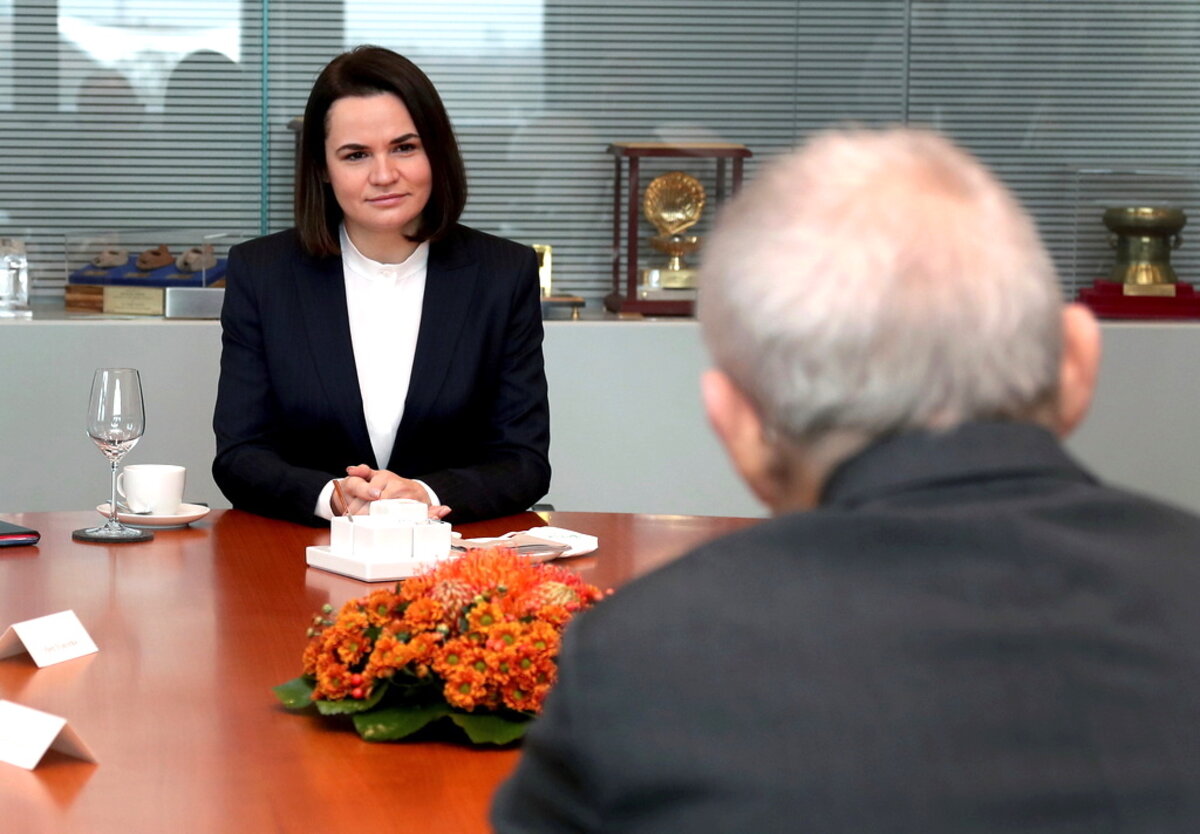
For decades, Europe has led the world in establishing a norm against the use of torture by governments. Since August, however, its leaders have faltered in responding to the well-documented torture of hundreds of pro-democracy protesters in Belarus, a former Soviet state in eastern Europe. Now Europe may finally be bringing its moral bearings to one of its own, all too aware that a continent known for atrocities in the last century must set a standard against crimes of humanity.
On Dec. 12, Switzerland froze the financial assets of the leader of Belarus, Alexander Lukashenko, and 14 others for the use of violence against protesters. A few days earlier, the International Olympic Committee put sanctions on the country’s National Olympic Committee and banned Mr. Lukashenko from the next Games. In neighboring Lithuania, law enforcement officials are gathering testimony from exiled Belarusians to prepare for trials of security officers accused of torture. And the Council of Europe, which consists of 47 member states, plans to discuss a legislative measure aimed at investigating the mistreatment of Belarusian citizens by police.
All this comes as Belarusian opposition leader Sviatlana Tsikhanouskaya, who by most accounts won the Aug. 9 presidential election against Mr. Lukashenko, has been touring Europe asking for action against the use of torture in her country.
“Every time I meet with heads of state, I try to convey this pain. We try to tell them about the innocent people who have been locked up and about the humiliation they are being subjected to. We try to appeal to their conscience, saying, ‘You proclaim the primacy of human rights, and look what’s happening in the country next door, while all you do is express concern. How is that possible?’” she told The New Yorker.
Her pleas along with those of others are working on one key player in Belarus. In mid-November, Russian presidential spokesman Dmitry Peskov condemned the Belarusian police for their brutality. The Kremlin’s support of Mr. Lukashenko may be wavering as polls show a shift among Belarusians away from the country’s traditional alliance with Russia and toward Europe.
Every weekend since the rigged election four months ago, protests have continued in Belarus. By mid-September, the United Nations had received 450 reports of torture and other abuse of detainees. Human rights organizations like Human Rights Watch, Nash Dom, Amnesty International have taken the testimony of hundreds of victims who describe beatings, prolonged stress positions, and electric shocks.
The increase in foreign pressure, along with the protests, could be creating dissent within the regime’s security forces. “This system will devour itself,” Ms. Tsikhanouskaya told an independent Belarusian news site. “We need to take to the streets consistently every week, speak about a new election, about principles, about a future Belarus, make friendship with other countries.”
In late January, Ms. Tsikhanouskaya is expected to meet with Joe Biden in Washington after he becomes president. For now, her focus is on the European Union, a friend of Belarus and the world’s standard-bearer against torture. It is finally awakening to torture in its own backyard and the response it demands.

A Christian Science Perspective
Each weekday, the Monitor includes one clearly labeled religious article offering spiritual insight on contemporary issues, including the news. The publication – in its various forms – is produced for anyone who cares about the progress of the human endeavor around the world and seeks news reported with compassion, intelligence, and an essentially constructive lens. For many, that caring has religious roots. For many, it does not. The Monitor has always embraced both audiences. The Monitor is owned by a church – The First Church of Christ, Scientist, in Boston – whose founder was concerned with both the state of the world and the quality of available news.
Overcoming suicidal thoughts
- Quick Read
- Read or Listen ( 4 Min. )
-
By Ali Ziesler
At times, mental darkness may seem overwhelming. But as a woman experiencing intense thoughts of suicide found, each of us has a God-given ability to know our innate worth as God’s child and feel divine peace and joy.
Overcoming suicidal thoughts
I’ve felt drawn to suicide more than once in my life, but I didn’t really rebel against it until nearly four years ago, when the intensity of the pull felt overwhelming. According to a website, I had 11 of the 12 “qualifications” for someone who is suicidal.
I briefly saw a counselor and also called the suicide crisis hotline, but I turned mainly to Christian Science for guidance. This included reading and studying passages in the Bible and the writings of Mary Baker Eddy, the discoverer of Christian Science. Her “Miscellaneous Writings 1883-1896” addresses a question about suicide, saying: “Mortals have the sum of being to work out, and up, to its spiritual standpoint. They must work out of this dream or false claim of sensation and life in matter, and up to the spiritual realities of existence, before this false claim can be wholly dispelled. Committing suicide to dodge the question is not working it out” (pp. 52-53).
Challenged by this concept, I began to see that my own thought was mired in materiality: I was constantly comparing myself with others, devaluing the work I was doing, and questioning my decisions. I was convinced I was not of value to this world.
A statement from Christ Jesus documented in the Gospel of Mark stood out to me: “If a kingdom be divided against itself, that kingdom cannot stand” (3:24). I began to see that I wasn’t making room for the good ideas that God, divine Mind, sends all His children, and this was essentially stifling me. It is futile to attempt to fight the supreme power that is inextinguishable Life, God. God designed each of us as a beloved spiritual idea. And we cannot smother our own unfolding sense of God as Life.
Every day, we are presented with opportunities to discover more of God as Life and experience Life’s vibrancy, fullness, joy, and newness in ourselves. Pervasive negative thoughts may attempt to smother the better thoughts that are beginning to gain hold. And we may experience a mental struggle that is vehement and persistent. But we have God on our side.
Christian Science explains that we are the expression of God’s being. As “Science and Health with Key to the Scriptures” by Mrs. Eddy states, “God’s being is infinity, freedom, harmony, and boundless bliss” (p. 481). The suggestion that we are separated from good and limited in expression is a direct departure from the spiritual fact of our reflection of God’s nature.
I began seeing that the opposite of living freely is succumbing to mental influences that would work against the establishment of health, harmony, and holiness in my consciousness. To counteract these influences, I began looking beyond myself – and seeing signs of life! People’s smiles, beauty in nature, kind greetings from strangers, all gave me hope. With that new hope, I started to reevaluate my sense of place and found envy dropping away.
Could I accept the fact that I had value just as I am, here and now, and work to more fully live my spiritual stature as God’s beautiful idea? Yes. Acknowledging God as the basis of my existence awakened my receptivity to the Christ, the divine influence Jesus represented, which directly counters negative thoughts by giving us an understanding that Life is God and that we live in Life as Life’s expression.
The brightest, most potent source of light is a proper sense of spiritual identification as revealed in Christian Science. It shows us that we are already good because we reflect the Mind that is God, and that we can employ divine Mind’s power in our own lives to achieve good. Suicidal thoughts may come to people from all walks of life, but consciously embracing knowledge of our true spiritual identity removes the supposed power of seduction toward death.
Undertaking the battle to resist these pulls, I got to know God better and trust His omnipotence more. A growing willingness to accept my spiritual nature as God’s expression replaced the mortal elements in my thought that used to respond to the suggestion that I wanted to die. The always-present quiet flow of Christ messages overturned the false logic that suicide was a desirable route.
Suicidal thoughts don’t haunt me anymore; I’m engaged in the living of Life rather than the dark contemplation of how to die.
Christian Science equips us to take hold of eternal Life and triumphantly live it with joy. As this Bible passage in Ephesians says: “Take unto you the whole armour of God, that ye may be able to withstand in the evil day, and having done all, to stand” (6:13).
Adapted from an article published in the March 30, 2020, issue of the Christian Science Sentinel.
Some more great ideas! To read or share an article for teenagers on how recognizing God as the source of goodness enables us to break through limitations titled “Who's at the center of your race?” please click through to the TeenConnect section of www.JSH-Online.com. There is no paywall for this content.

A message of love
Prep for a winter launch

A look ahead
Thank you for joining us today. Tomorrow, our Harry Bruinius will look at the “lost cause” myth that enshrouded the Civil War and the Confederacy for decades, and whether President Donald Trump’s loss in the presidential election could become a similar rallying point for supporters who see him as a “president-in-exile.”


